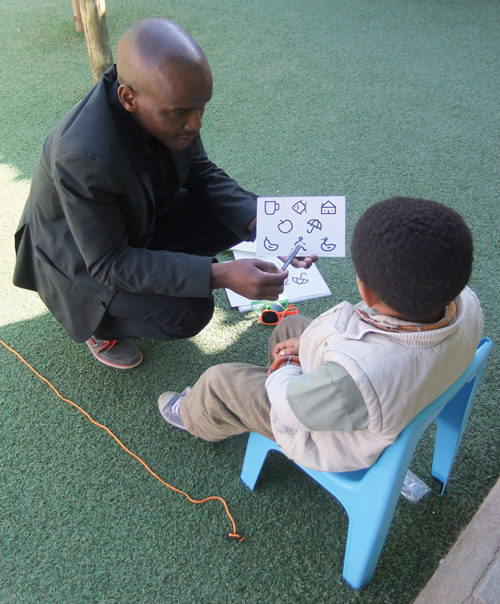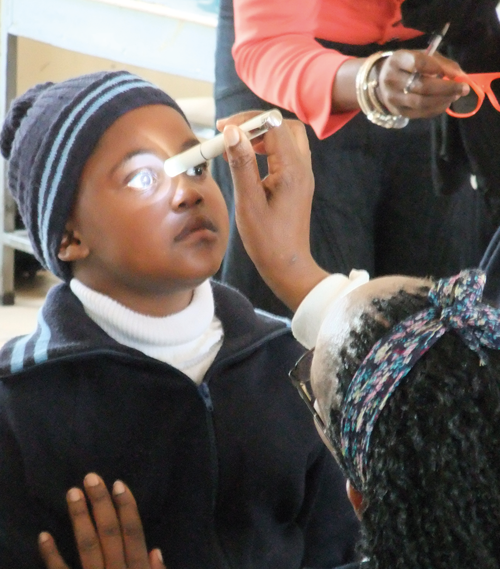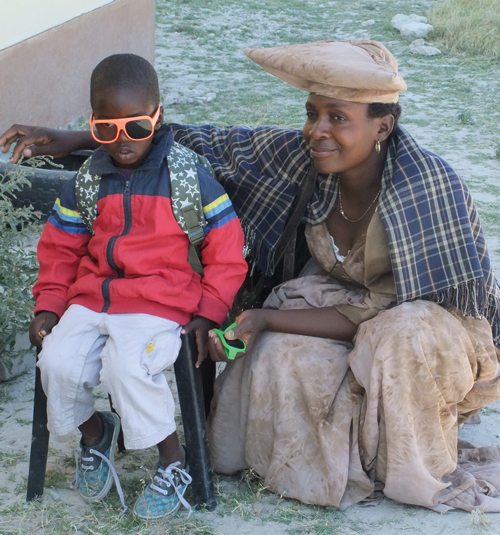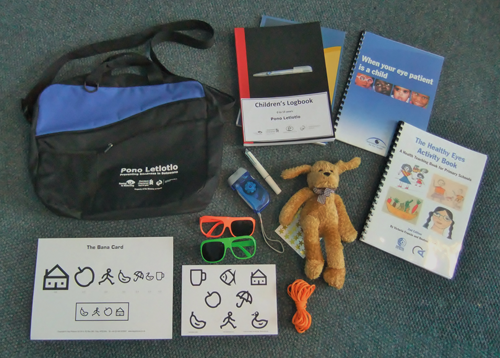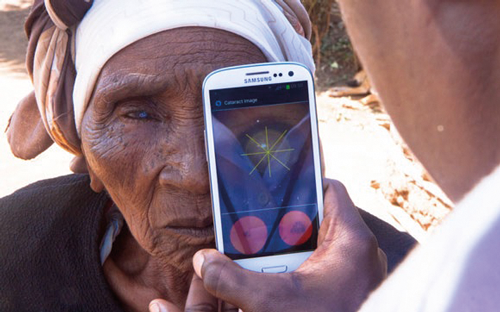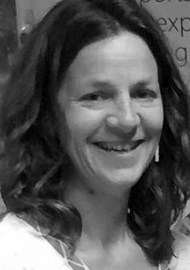The VISION 2020 LINK between Botswana and Addenbrooke’s Abroad has been running for 10 years. With support from the VISION 2020 LINKS Programme two-way exchange visits were undertaken leading to the formation of the first formal international partnership under Addenbrooke’s Abroad, which was a newly-established charitable programme supporting international volunteering at Cambridge University Hospitals.
Botswana
Botswana is a land-locked country in southern Africa. It is roughly the size of France and the majority of its 2.2 million population live in the eastern part of the country in the capital, Gaborone, and surrounding areas. Its tourist attractions include Chobe National Park and the Kalahari desert, home to the famous telegenic meerkats. It is classed as a middle-income country – diamond mining is a major part of its economy, as well as tourism, subsistence farming and raising cattle. Despite progress in its economy, the country still has challenges of unemployment and poverty. Health services are developing and the population that lives in the north and west of the country are particularly difficult to reach because it is sparsely populated. However, there are some mobile ‘stops’ and outreach services to these remote areas.
The Botswana-Addenbrooke’s Abroad VISION 2020 LINK
Addenbrooke’s Abroad is a partner in the Botswana Ministry of Health’s national eye health programme. The VISION 2020 LINK has been supported by funding from two phases of the ‘Seeing is Believing’ initiative of Standard Chartered Bank [1]. ‘Pono Letlotlo’ (Sight is treasure) is the name given to the project funded by ‘Seeing is Believing’. Since 2013 there have been three main areas of focus:
- development of diabetic retinopathy (DR) services
- screening services for pre-school and early primary school children
- a vision centre that provides free and low-cost spectacles to vulnerable groups.
There has also been progress in:
- outreach services by the new cadre of optometrists employed in the public sector
- maintenance services for ophthalmic equipment.
Working closely with the national eye health programme at the Ministry of Health, the LINK has provided training, management, capacity building and equipment to support the achievement of the project goals.
As a result of the project, during the last three years:
- over 4500 children have had their visual acuity tested
- over 1800 refractions have been completed
- 1700 pairs of spectacles have been supplied
- 7000 screening tests for diabetic retinopathy on people with diabetes.
A publicity campaign on TV, radio and in national newspapers has reached more than 800,000 people, raising awareness of new and improved eye services now available for people with diabetes, children and people with refractive error.
Addenbrooke’s Abroad also contributed expertise to a nationwide Rapid Assessment of Avoidable Blindness (RAAB) survey in 2014 which provided new and disturbing evidence showing that blindness and visual impairment had increased by more than 30% when compared with the results of a RAAB conducted in 2005.
The results of the RAAB in 2014 provided impetus for the development of a new five-year strategic plan for eye care in Botswana. The goal of the 2015-19 National Plan is to achieve the target in the Global Action Plan of reducing the prevalence of avoidable visual impairment by 25% by 2019 [2].
Via the LINK, the team from Addenbrooke’s has also:
- provided expert input to support the development of specialist clinics for glaucoma and paediatric ophthalmology, and the ophthalmic nurse training curriculum.
- supported Cambridge University medical students who have undertaken joint research projects with Botswana University students looking at diabetic retinopathy and glaucoma services.
- hosted training visits by ophthalmic and other clinical staff to Cambridge to observe and share learning.
Addenbrooke’s Abroad plans to continue supporting eye care services in Botswana via the VISION 2020 LINK. ‘Seeing is Believing’ funding ends this year but further funding is being sought to enable the LINK to continue to support the Botswana Ministry of Health to bring about improvements in eye health for the people of Botswana.
Screening for diabetic retinopathy in Botswana – the screener’s perspective, by Pearl Katlego Mbulawa, Block 6, Princess Marina Hospital, Gaborone
Screening for diabetic retinopathy (DR) in Botswana was enhanced in 2009 when a fundus camera was provided by Addenbrooke’s Abroad (AA). Before then, nurses and ophthalmologists had used ophthalmoscopes, a slit-lamp with 78/90 D lenses and indirect ophthalmoscopes.
Eye nurses are scattered around the country and carry out the screening on a smaller scale because of limited resources. At Princess Marina Hospital in the capital, Gaborone, screening with use of a camera enables me to appreciate pathology. Taking exudates as an example, it never made sense with an ophthalmoscope. Now it is so clear with the camera, they make explaining much easier and patients appreciate and even make behavioural changes because they are able to see the extent of their condition. Patients can then understand better the importance of good glycaemic control.
As a pioneer of this part of the project I would like to say ‘thank you’ to the AA LINK and the Ministry of Health. The government bought another four cameras and we have five screening sites in Botswana. AA has always been supportive. They send technical advisers to train nurses on screening and grading and also ophthalmologists in the management of sight-threatening DR patients by using laser treatment.
We initially started with two nurses trained in DR screening and now we have about 15 nurses trained through the LINK.
We held a roadshow in 2014. The main aim was to sensitise healthcare professionals about availability of DR screening, the importance of screening and the need for referrals to the centres and to make them aware of the sites across the country. We invited ophthalmologists, physicians, doctors from government and private practice, optometrists, opticians, nurses and the media. The team visited Sekgoma, Francistown and Letsholathebe and the reception was very positive.
Patients are always grateful for the government effort towards ensuring that they have good vision and are keen that they don’t lose the little vision that they have – especially those who have lost sight in one eye. For example, a patient will say to me, “I would be blind by now if it wasn’t because of this camera nurse, because right now I can see exactly where the problem is and I am going to work so hard in order to preserve the vision that I have by complying.”
Children’s vision services in Botswana
Claire Studley Scott, a Technical Advisor to Project Pono Letlotlo and a Specialist Orthoptist within the NHS, worked alongside the Ministry of Health for a year to help develop national children’s vision services. The aim was to increase the number of children referred to health services with suspected impaired vision.
“Patients even make behavioural changes because they are able
to see the extent of their condition.”
Case finder / key informant training by child eye trained ophthalmic nurses, Kanye, Botswana, 2014.
Achievements:
- Integration of child eye health within the ministries of health and education.
- Child eye health part of the Child Welfare Clinic Card, which few other African countries have yet done, providing an opportunity to identify and treat children early.
- Government provision of glasses for under 16s.
- Child eye health incorporated in ophthalmic nurse curriculum.
- Thirteen ophthalmic nurses trained as trainers in child eye health, intention to develop ‘Train the Trainers’ to reach all ophthalmic nurses.
- Trainers cascading child eye health training to ophthalmic nurses.
- Over 500 case finders trained in the health and education sectors.
- Public awareness of the potential lifelong impact of untreated conditions from childhood. “Patients even make behavioural changes because they are able to see the extent of their condition.”
National Plan for Eye Care
With expert input from the co-director of the International Centre for Eye Health and Chair of the VISION 2020 LINKS Programme [3], Professor Allen Foster, the Ministry of Health has developed a National Plan for Eye Care 2015-2019. The plan documents an overall five-year goal to reduce blindness and visual impairment by at least 25% from 2014 levels and it specifies three objectives to be accomplished in order to achieve the overall goal. Specific activities are also defined.
Children’s vision screening using the case finder kit.
Cataract project
There are established permanent cataract services in two hospitals and the plan is to add two more, in the North West and Northern parts of the country. The two hospitals are staffed with six to seven ophthalmologists and an ophthalmologist has recently started services in Maun (North West). This begins to address the National Plan priority to develop permanent cataract services and increase the Cataract Surgical Rate (CSR) to the level recommended by the World Health Organization (WHO) [4].
However, to help reduce unnecessary blindness due to cataract while these services are being developed, a role for a specific, limited cataract campaign was identified. Through the LINK with Addenbrooke’s Abroad, the obvious partner was Sankara Eye Care Institutions (SECI) in India. Sankara had previously benefitted from support from Addenbrooke’s Hospital through a training partnership and it was fitting that this provider of high-volume cataract surgery should offer to share their expertise with Botswana.

The poster provided to case finders in the children’s vision service.
Funding has been obtained from Combat Blindness International to enable 6,000 cataract surgeries to be carried out by the SECI team in Botswana over three years starting in 2016. This will tackle the backlog and provide time for permanent services to further develop to address future cataract cases.
The equipment provided to case finders in the children’s vision service.
Peek
The Portable Eye Examination Kit (Peek) – is a smartphone-based tool to enable comprehensive eye examinations and linkage to eye care services [5]. The National Plan identifies six specific areas of input for Peek into development of eye health services in Botswana. The Peek team are working closely with the Ministry and partners to integrate Peek into the national eye care system.
Peek smartphone app in use for vision testing.
Overall achievements to date
With the support of the LINK with Addenbrooke’s Abroad, new and improved eye services are available for people with diabetes, children and people with refractive error. Incorporating eye health into the child health record card is a major step forward and will save lives (by spotting retinoblastoma early) as well as sight. A new National Plan for Eye Care has been developed that will guide the improvement of eye care services over the next five years. Through the LINK with Addenbrooke’s, a three-way LINK with Sankara Eye Care Institutions in India has been established that aims to eliminate the backlog of cataract blindness over the next three years. Botswana is embracing new technology through its planned role in pilot testing of Peek.
References
1. Seeing is Believing website.
www.seeingisbelieving.org
Last accessed February 2016.
2. Universal eye health: A global action plan 2014-2019.
www.who.int/blindness/AP2014_19_English.pdf?ua=1
Last accessed February 2016.
3. VISION 2020 LINKS programme. International Centre for Eye Heath. London School of Hygiene and Tropical Medicine.
http://iceh.lshtm.ac.uk/vision-2020-links-programme/
Last accessed February 2016.
4. Cataract. IAPB.
www.iapb.org/vision-2020/
what-is-avoidable-blindness/cataract
Last accessed February 2016.
5. Peek website.
www.peekvision.org/
Last accessed February 2016.
Acknowledgement
The authors and contributors would like to thank everyone who has worked on the development of eye care services in Botswana through the VISION 2020 LINK with Addenbrooke’s Abroad, with particular thanks to Tunde Peto, Peter Blows, Consuela Moorman, Andrew Bastawrous and the Vision Aid Overseas team.

COMMENTS ARE WELCOME


